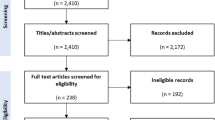Abstract
Current practice in economic evaluation is to assign equal social value to a unit of health improvement (‘a QALY is a QALY is a QALY’). Alternative equity positions are typically considered separately from efficiency. One proposal seeks to integrate these two sets of societal concerns by attaching equity weights to QALYs. To date, research in pursuit of this goal has focussed on candidate equity criteria and methods for estimating such weights. It has implicitly been assumed that should legitimate, valid and reliable equity weights become available, it would be a straightforward task to incorporate them as a separate simple calculation after estimating cost per un-weighted QALY. This article suggests that, in many situations, these simple approaches to incorporating equity weights will not appropriately reflect the preferences on which the weights are based and that the appropriate incorporation of equity weights in cost-effectiveness analyses will be technically challenging. In addition to the technical challenges, there are a number of issues that arise in the movement from implicit to explicit consideration of equity. Whilst equity weights can, conceptually, be incorporated in economic evaluation, there are a number of challenges to be addressed before the results of such analyses can be considered robust and a fit basis for resource allocation decisions.
Similar content being viewed by others
References
Drummond M, McGuire A, editors. Economic evaluation in health care. Oxford: Oxford University Press, 2001
PHARMAC Pharmaceutical Management Agency. Decision criteria [online]. Available from URL: (http://www.pharmac.govt.nz/patients/DecisionMakingProcess/DecisionCriteria) [Accessed 2009 Mar 24]
NICE. Social value judgements: principles for the development of NICE guidance. London: NICE, 2007
Schwappach D. Resource allocation, social values and the QALY: a review of the debate and empirical evidence. Health Expect 2002; 5: 210–2
Dolan P, Shaw R, Tsuchiya A, et al. QALY maximisation and people’s preferences: a methodological review of the literature. Health Econ 2005; 14: 197–208
Dolan P, Tsuchiya A. The elicitation of distributional judgements in the context of economic evaluation. In: Jones A, editor. Companion to health economics. Cheltenham: Edward Elgar, 2006
Wagstaff A. QALYs and the equity-efficiency trade off [published erratum appears in J Health Econ 1993; vn12 (2): 237]. J Health Econ 1991; 10 (1): 21–41
Williams A. Intergenerational equity: an exploration of the ‘fair innings’ argument. Health Econ 1997; 6: 117–32
Nord E, Pinto JL, Richardson J, et al. Incorporating societal concerns for fairness in numerical valuations of health programmes. Health Econ 1999; 8: 25–39
Dolan P, Olsen JA. Desperately seeking numbers: the notso-holy grail of the super QALY [abstract]. 20th Nordic HESG; 1999 Aug 20-21; Reykjavik
Dowie J. Towards the equitably efficient and transparently decidable use of public funds in the deep blue millennium. Health Econ 1998; 7: 93–103
Johnson P, Falkingham J. Ageing and economic welfare. London: Sage, 1992
Office for National Statistics. 2008 Trends in life expectancy by social class 1972-2005 [online]. (Available from URL: http://www.statistics.gov.uk/downloads/theme_population/Life_Expect_Social_class_1972-05/life_expect_social_class.pdf) [Accessed 2008 Apr 30]
Barrett A, Roques T, Small M, et al. Rationing: how much will herceptin really cost? BMJ 2006; 333: 1118–20
Williams A, Cookson R. Equity in health. In: Culyer AJ, Newhouse JP, editors. Handbook of health economics. Vol. 1b. Amsterdam: Elsevier, 2000
Acknowledgements
For helpful comments on previous drafts the authors would like to thank Neill Booth, John Brazier, Karl Claxton, Tony Culyer, Paul Dolan, Mark Sculpher, and others at meetings in York, Sheffield and Birmingham. Allan Wailoo is funded by the National Institute for Health and Clinical Excellence (NICE) Decision Support Unit and the Yorkshire and Humber Research Design Service (RDS).
The authors have no conflicts of interest that are directly relevant to the content of this article.
Author information
Authors and Affiliations
Corresponding author
Rights and permissions
About this article
Cite this article
Wailoo, A., Tsuchiya, A. & McCabe, C. Weighting Must Wait. Pharmacoeconomics 27, 983–989 (2009). https://doi.org/10.2165/11314100-000000000-00000
Published:
Issue Date:
DOI: https://doi.org/10.2165/11314100-000000000-00000




